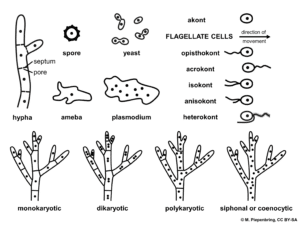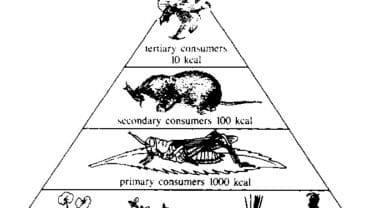Six interesting question about fungi
Interesting question about fungi No. 1.
Many fungi resemble protists or even plants. What is the justification for placing fungi in a separate kingdom?
Answer: To begin with Interesting question about fungi answer it that at one time the fungal forms that taxonomists have currently placed in a separate kingdom were grouped as a division of the plant kingdom, the true fungi. However, fundamental differences distinguish the fungi from both plants and protists.
Heterotroph
All fungi are heterotrophs, which obtain their food by absorption from outside.
Cell wall
Although many fungi do store some cellulose in their cell walls. The predominant cell wall constituent is almost always chitin. Clearly distinguishing fungi from the plants.
Reproduction
Unlike many plants and some colonial protists, the fungi do not have flagellated zoospores, nor are the vegetative cells of the mycelium motile. The rapidly spreading growth of the mycelium perhaps compensates for the lack of a locomotor capacity.
Transportation of material
Although most of the members of the kingdom are multinucleate, the partitions {septa) dividing the cytoplasmic compartments are usually imperfect. So that continuity of cytoplasm exists. This permits a rapid transport of materials from regions where food is being absorbed to the hyphal termini, where rapid growth takes place.
Interesting question about fungi No. 2.
Some taxonomists have classified the water molds (Oomycota) as fungi. In fact In this book, we have placed them among the Protista. Why?
Answer: Perhaps the strongest argument for excluding the water molds from the kingdom Fungi is the absence of chitin in their cell walls. Chitin is found in all other fungi. Atypical, too, is the dominance of the diploid phase of their life cycle. Almost all fungi are predominantly haploid. No fungal group contains flagellated zoospores, while the water molds do present this feature. They also produce eggs, which is not a characteristic of fungi. Also, septal compartments are most inconspicuous in their mycelia.
For these reasons, the water molds, which have done such serious damage to potato crops and vineyards, are best regarded as protists. Their multicellular (actually, coenocytic) character, however, is an argument against a protistan assignment.
Interesting question about fungi No. 3.
Which probably contributes more to the evolutionary survival of Ascomycota—the conidia or the ascospores?
Answer: Ascospores, though haploid, are the result of sexual union between the hypha of two different sexual strains; the conidia are formed asexually. Because of the genetic recombination inherent in sexual reproduction, the ascospores impart greater genetic diversity to Ascomycota and, therefore, greater adaptability (and survivability) in the face of environmental stress.
Interesting question about fungi No. 4.
What term would be used if a single haploid nucleus divided to form two identical, unfused nuclei?
Answer: The resultant cell would be said to be homokaryotic. In the dikaryotic condition, two unfused nuclei lie within the same cell. This is a typical condition encountered in the reproductive tissue of many fungi just before syngamy (union of nuclei or union of cells). If the two unfused nuclei are genetically different, the cell is heterokaryotic.
Interesting question about fungi No. 4.
Suggest some ways fungal diseases might be fought?
Answer:
Destruction of Host
Some fungi, such as wheat rust, have two intermediate hosts. When one of the hosts is economically important and the second is not, destruction of the second host may be used to halt the spread of the fungus. Complete destruction of all the members of a particular species is necessary for this technique to be effective, but this is extremely difficult. In the case of wheat rust, destruction of the barberry plant is called for.
Use of Sterilized Things
Using sterilized soil and disinfecting seeds before planting may stem the spread of fungal disease. In cases in which insects are known to carry fungal diseases, all-out war against the insect vector with insecticides or biological agents is effective.
Dusting
Dusting with copper salts or other fungicides is an effective technique to halt the spread of infestation in crops. In fungal infections in humans, such potent preparations as griseofulvin have eliminated serious conditions. Since fungi prefer warm, moist conditions, maintaining a dry environment at low temperatures could inhibit fungal growth.
Genetically Modified Plants
Plant geneticists have developed resistant plant strains, but fungi have also altered their genetic makeup and may, in the course of evolution, regain the upper hand.
Interesting question about fungi No. 6.
Most fungal spores, whether sexual or asexual in derivation, are disseminated by the wind. Most algal zoospores are disseminated by water. Why should this be the case?
Answer: Fungal spores are not flagellated and have no means of locomotion. Their passive character requires relatively rapid air currents for their dispersal. The zoospores of algae are usually flagellated. They may move quite effectively and rapidly through the water. Also, most algae dwell within lakes, ponds, or oceans, whereas the common fungi are generally terrestrial.





